Thuja western Brabant
It is no secret that conifers remain the favorites of landscape designers when it comes to landscaping a garden plot. They are unpretentious, live long, and withstand the low temperatures of winter well. And most importantly, most of them remain green all year round, which is an indisputable advantage over deciduous plants. Among evergreen conifers, thuja are especially popular, first of all, the western thuja varieties. One of them is the Brabant variety (Thuja occidentalis Brabant), the merits of which will be discussed below.
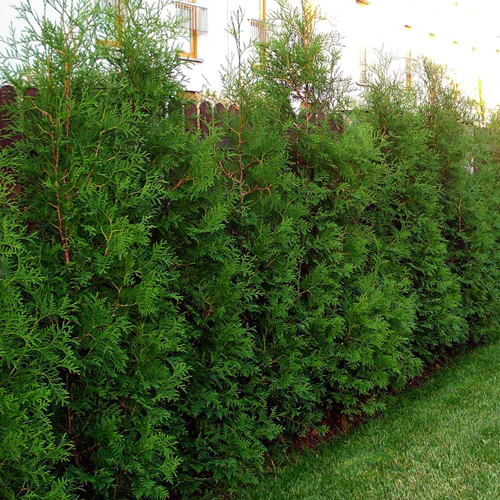
Description of the plant
Since our heroine belongs to the western thujas, all the characteristics of the species are inherent in her, namely: increased vitality, plasticity, the ability to adapt to environmental changes, evergreen needles, rather slow growth, high frost resistance, harmonious crown shape, etc.
Despite this, Brabant has a number of qualities that are largely inherent only in this variety. Among them, the following should be noted.
- Increased growth rate. This variety increases in height by about 30 cm per year, and with good care it can even grow by half a meter! For several decades, it is able to reach a 10-meter size, although specimens from 4 to 6 meters prevail in reality.
- The tree grows well not only upward, but also in width. Skillful and timely pruning can make Brabant look like a tall, pyramidal plant or a wide bush. This quality is especially important when organizing a hedge.
- For its exceptional vitality, this thuja was nicknamed the “tree of life”. Perhaps, among all the thujas, it is the most unpretentious, while it does not lose the freshness of its color even in winter.
- At the same time, he likes good lighting, and although it will not die with a lack of light, the appearance (size and color of the needles) will suffer.
- Over time, the dense and dense crown becomes looser, the branches "disintegrate" a little to the sides. However, this does not happen earlier than after 10-12 years of life.
- The branches begin to grow practically from the ground itself; from afar it seems as if the tree trunk does not exist at all.
- Like its "brothers", Brabant is a long-liver - her age can easily exceed a hundred years.
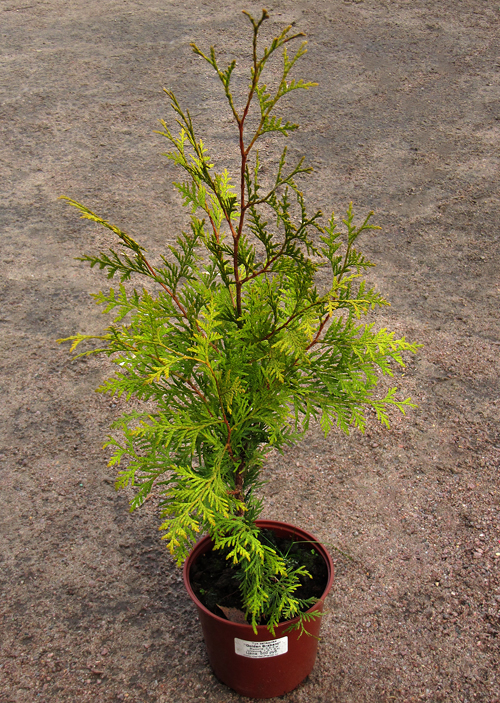
This thuja has almost no varieties, with the exception of one - Golden Brabant (Thuja occidentalis Golden Brabant)... The subspecies is distinguished by a special, slightly golden shade of needles, especially noticeable on the tips of young shoots, and also by its short stature. Perhaps it can be safely called a bush, not a tree. The combination of a stocky, golden "Golden" looks great against the background of tall, slender, juicy green "regular" Brabants!
Application in landscape design
Those features of the variety that we have listed above determine its use for landscaping. Gardeners primarily take advantage of this variety's ability to grow rapidly. If you decide to create a living fence from thuja, you cannot find the best variety! Moreover, as already noted, plants can, if desired, be formed in the form of wide bushes, capable of closing the crowns over several years and creating a continuous hedge, moreover, looking very attractive.
The ability to grow quickly is also indispensable for creating picturesque alleys that look colorful in winter and summer. But, of course, Brabant will perfectly fit into a group landing, and it can even act as a spectacular single copy. And in this case, the ability of the variety to be either a slender, pyramidal tree, or a wide bush, will turn out to be a valuable, irreplaceable quality.
Landscape designers know how to conveniently use thuja Brabant to decorate park areas. Due to its rapid growth, its crown can be formed based on a variety of creative concepts. This plant is a kind of "living plasticine", with the help of which skilled gardeners create real green masterpieces!
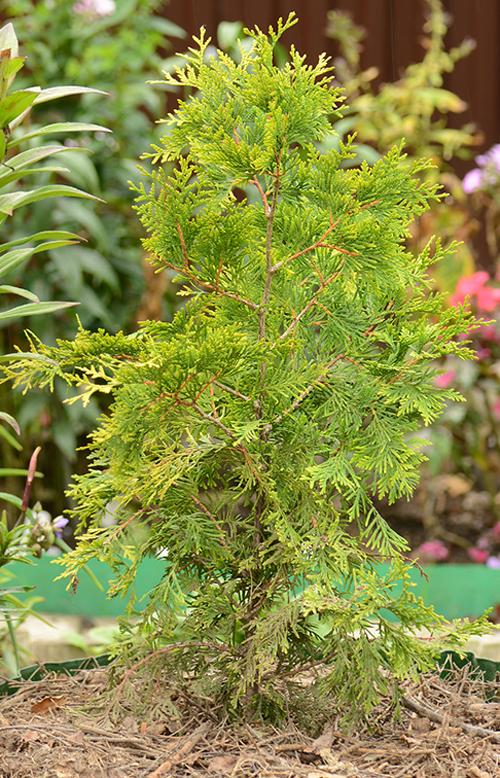
General care instructions
In this article, we will not give detailed instructions on how to grow this variety.It has already been said that, in general, its nature is close to all Western thujas; the peculiarities of caring for them can be found in reference books, special literature or the Internet. Let us dwell on a few points that are important precisely for caring for Brabant.
- The ideal place for planting is a bright area, which is illuminated by direct sun for at least half a day. Sunshine from morning to evening, as well as constant shade, oppress the plant, worsen the appearance of the needles.
- This variety is undemanding to the soil, but still prefers fertile loams. Unlike other thujas, it can also develop on relatively poorly drained lands. It is noticed that even on poor, unsuitable soils, the variety is able to grow quickly, but at the same time its crown looks stunted, "thin".
- The tree is resistant to prolonged droughts. At the same time, I will forgive you if you overmoisten the soil for a while. Thus, the state of the land can be monitored less closely.
- But what requires care and organization is the formation of the crown, pruning. We have already mentioned vigorous growth more than once as an advantage of the variety, but it also forces the owner not to start pruning, otherwise the thuja may lose shape, given its tendency to grow in width. Pruning is best done in early spring and late summer, before the young twigs are lignified.
- Although the frost resistance of Brabant allows the plant to be grown in the 3rd zone, it is still necessary to mulch the surface around the trunk for the winter, for example, with chips or bark. This is especially important for specimens in the first years of their life.
As you can see, thuja Brabant has many advantages, and if you need an evergreen conifer to decorate a garden corner, choosing this variety will be the right and excellent decision!



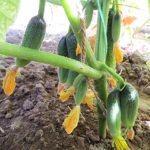

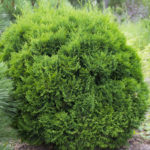



The advantage of thuja "Brabant" is its rapid growth and the possibility of its reproduction not only by cuttings, but also by seeds. Which I successfully managed to do by sowing seeds in a flower pot. Thuja endured three winters (up to 17 degrees below zero). I do not advise planting it in the shade, since the crown is sparse, the branches lengthen and go down. A good tree with a fairly dense crown grows in a sunny area. But some branches still have to be shortened. Very unpretentious to the composition of the soil (mine grows on loam).